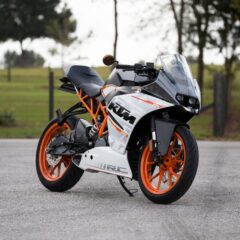
7 Top Motorcycle Accessories
With Christmas just around the corner, you might be wondering what to get your favourite motorcycle enthusiast or even a little something for yoursel...
 Phoenix Motorcycle Training LTD
Phoenix Motorcycle Training LTD
 Phoenix Motorcycle Training LTD
Phoenix Motorcycle Training LTD

UK motorcycle rules are a lot different to the ones drivers of cars and other four-wheeled vehicles have to follow. From getting your licence to riding and parking, navigating traffic on a bike is vastly different to cars.
Learning to ride is a lot quicker than learning to drive. Direct access courses and CBT certification are just a few options to get you on the road faster. Once you’ve got your licence, the freedom continues. Motorcycle parking rules are very different to cars. UK motorcycle rules for getting from A to B are a lot different too.
If you’ve ever longingly wished you could skip traffic jams like motorcyclists, or easily find a parking spot when reaching the end of your ride, this blog is for you. We take a look at 3 of the UK motorcycle rules that may convince you to ditch the car and jump on a bike instead.
If you’ve ever been stuck in London’s traffic and seen a scooter zip by in the bus lane, the chances are you wondered if it was legal. Or maybe you even smirked and thought “the cameras will get him!”
Motorcycles and scooters can use all of the capital’s red-route bus lanes. The only ones that can’t are those with more than two wheels. Three-wheeled motorbikes need to stick in line with the rest of the traffic. Because they are wider, they need to leave bus lanes free for buses – and two-wheeled motors.
Beware of riding in bus lanes in other UK cities. Manchester doesn’t allow motorcycles to use bus lanes and neither does Exeter, Leeds or Glasgow. Edingburgh and Bristol are fine with it though. The British Motorcyclists Federation would like to see bus lanes open to motorcyclists in all areas, but it’s not the reality, yet.
Driving is usually great, but when it comes to parking, it can quickly turn into a nightmare. Most motorists can remember at least one time that they’ve circled a block or parking lot desperately searching for a parking space.
It’s a different story with a motorcycle or scooter. Motorcycle parking is often free. When it’s not, the designated (paid) bike spaces tend to be vacant. In some cases, you can even prop your bike up on the pavement.
In some cities, parking on the pavement is fine, as long as you don’t obstruct foot traffic. In others, like Cambridge, it’ll land you a ticket. And some council areas, make it a case of how the parking inspector feels when they see your wheels.
Our advice for motorcycle parking rules is to opt for the free or paid motorcycle parking bays when you can, always read the signs and avoid parking in bicycle bays. Your bike will be safer and you won’t be at the whims of any shirty parking inspectors out to up their quotas.
Always check the local council’s parking bylaws if you can’t find a free space for motorbikes before leaving your bike on the pavement.
Aside from whether or not you’ll be awarded a ticket for parking is the consideration of security. It pays to be careful where you prop your motorcycle or scooter up. Unsurprisingly, motorcycle theft went down over 2020 – 2021.
Sadly, when lockdowns lifted, thieves got back to work too. 25% of vehicles stolen in the UK are motorcycles. It’s an astounding figure when you consider just 3% of vehicles on the roads are motorbikes and scooters.
Using a good lock on your motorcycle and ensuring other security measures for your bike are in place is a great idea. Especially if you are leaving your motorcycle or scooter on the street overnight. More thefts occur after dark than in broad daylight.
Sometimes called “lane splitting”, the practice of filtering is fairly common for motorcyclists. There is a definite knack to it. It’s best to learn filtering with a course than trying to teach yourself in peak-hour traffic.
UK motorcycle rules encourage filtering. This is because it keeps traffic moving when wider vehicles are at a standstill. Undertaking – passing on the left – is discouraged, but it’s not illegal in slow traffic situations.
Riders who are considering filtering through traffic and passing on the left of stationary vehicles should be 100% sure they will remain stopped while passing. Motorcyclists need to be aware of drivers’ blindspots, the flow of traffic and oncoming vehicles when filtering through slow or stationary traffic.
When on a motorcycle, it’s easier and safer to keep moving, so you reach your destination faster. UK road rules keep road users safe and traffic flowing smoothly. By allowing motorcyclists and scooter riders to use bus lanes and filter through traffic, everyone gets where they want to go a little quicker. Even cars benefit, although not quite as quickly as motorcyclists!
Parking is easier too. Simply because motorcycles are smaller than cars. If there aren’t any free motorcycle bays and pavement parking is a no-no, most car parks and public buildings have specific motorcycle parking areas that are rarely full. In smaller towns and villages most councils won’t give motorcyclists a ticket for parking on the pavement as long as they’re not in anybody’s way.
Riding a motorcycle is fun. UK motorcycle rules are designed to keep riders safe, moving and able to park easily when they get where they’re going. Even if you’re disabled, you can usually train to ride a motorcycle. Why not get your motorcycle licence today and stop sitting in traffic?

With Christmas just around the corner, you might be wondering what to get your favourite motorcycle enthusiast or even a little something for yoursel...

If you love motorcycle riding, you’ve probably daydreamed about riding a motorbike for a living. A professional racer or stunt rider is OK for some...

Getting a UK motorcycle licence can seem a complicated process. Particularly when compared to a driving licence for a car. Whether you choose the pro...
This website uses cookies to personalise content, ads, and analyse traffic, sharing data with partners who may combine it with other information. See our Privacy Policy for more information.